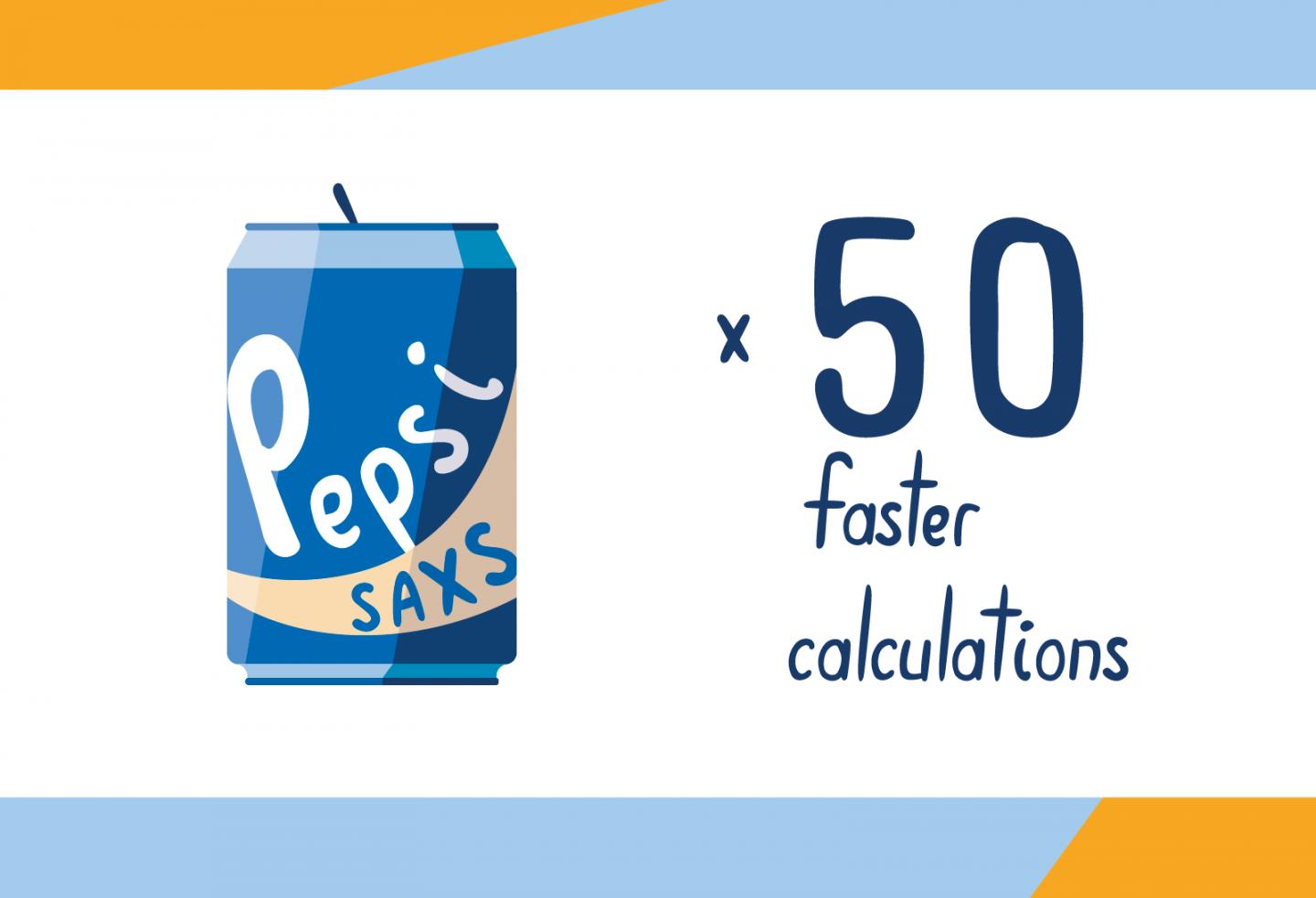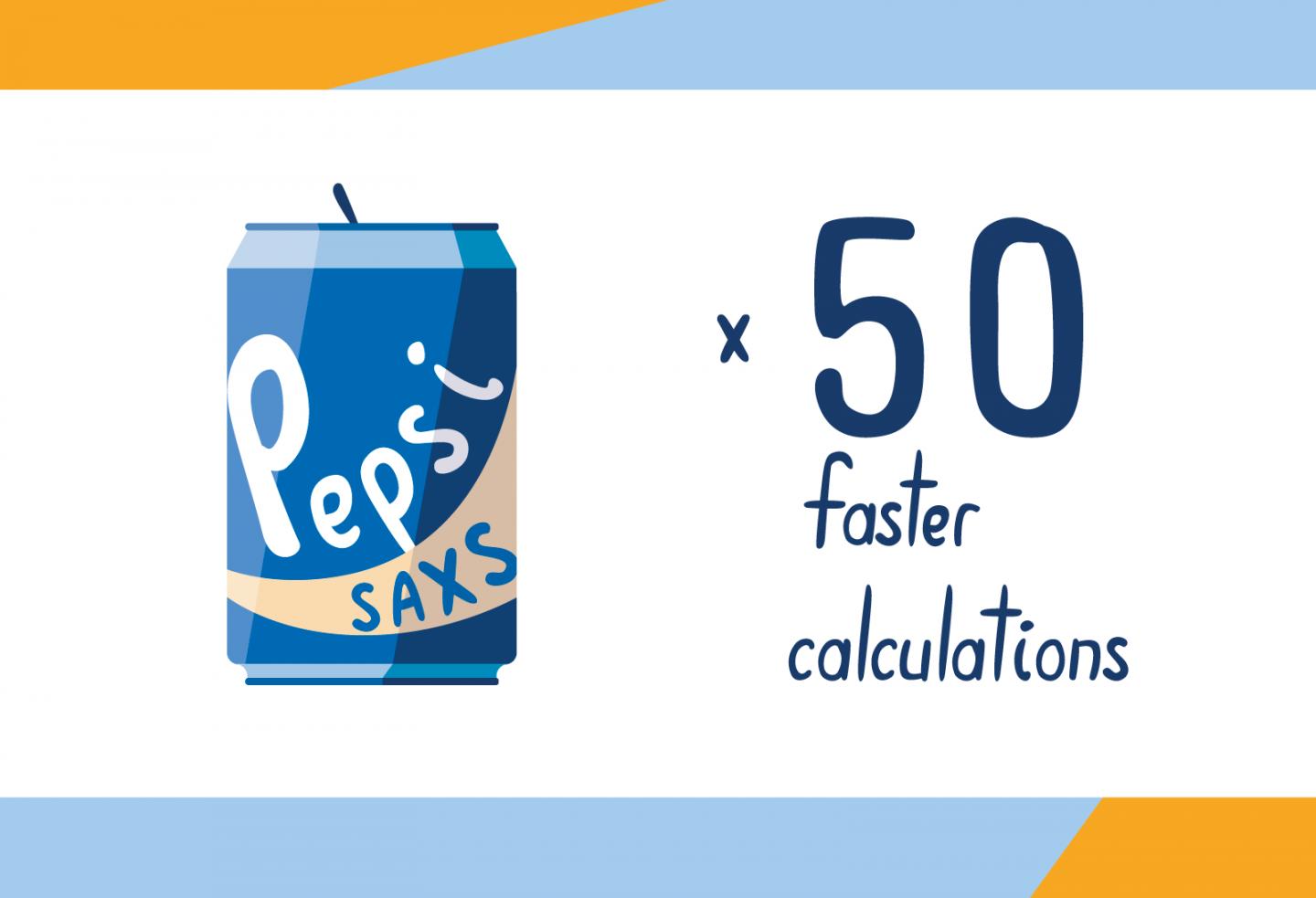
Credit: MIPT's Press Office
Pepsi-SAXS is a new highly efficient method for computation of X-ray scattering profiles, which are needed for solution-state protein molecule analysis. The method was created by scientists from the Université Grenoble Alpes and MIPT, led by Sergei Grudinin. The team tested their method, and the results were published by the International Union of Crystallography in its journal Acta Crystallographica Section D: Structural Biology.
Proteins have complex structure and extremely small size, on the order of several nanometers. To study them, researchers need to come up with unusual methods, because protein samples are all too easily destroyed and their properties altered in experiments. Knowledge of the structures and functional mechanisms of biomolecules enables new drugs to be developed not by trial and error — technically called high throughput screening — but in a more focused way.
One of the techniques used to study proteins is the analysis of X-rays scattered from them. Researchers need to use X-rays and not ordinary light because they are zooming in on individual atoms with a characteristic size on the order of 0.1 nanometers. The smaller the object, the shorter the wavelength of light that must be used to observe it. Visible light comprises wavelengths between 400 and 700 nanometers. X-rays, on the other hand, have a much shorter wavelength and thus can be used to examine molecular structures.
"The new method allows us to plot scattering curves efficiently and precisely, and analyze the three-dimensional structure of a sample," says MIPT student Maria Garkavenko, a co-author of the paper. "Among other things, Pepsi-SAXS boosts modeling efficiency and the accuracy of three-dimensional macromolecule structure prediction."
Small-angle X-ray scattering, or SAXS, is an experimental technique that involves scattering X-rays from a sample and then collecting them at very small angles. As a result, a plot of scattered X-ray beam intensity as a function of the angle of incidence is obtained. Using this plot, a protein sample can be compared to other samples in the experimental database to determine its structure and properties.
Compared with other techniques used to determine sample structure, SAXS is much simpler and cheaper. It requires only a minimum sample preparation, and the proteins need not be frozen or crystallized. The samples are studied in solution — in their functional state. This makes the results much more reliable, because sample preparation can sometimes alter the state and properties of a protein. Another important advantage of the method is that it is nondestructive, meaning that the experimental sample remains largely unaffected by X-rays.
But until recently, SAXS had one major drawback: The method was computationally intensive, which meant it could not be used if the number of experiments was substantial. It took hours to process the results of just one experiment. Initially, the number of computations was directly proportional to the square of the number of the atoms in the sample, the latter number usually exceeding a thousand. However, in the 1970s, Heinrich Stuhrmann, a German researcher, came up with an idea that allowed to simplify the calculations. He proposed that scattering on molecular compounds be described in terms functions of a particular kind called spherical harmonics. This approach proved to be a success. Over the years, a number of computational tools for the analysis of SAXS data were created. Important contributions to their development were made by researchers with a Soviet scientific background including Dmitri Svergun (he currently works in Hamburg), who wrote the ATSAS software suite for SAXS data analysis in biological macromolecule research. The researchers in the study which is reported here examined several computational methods and compared them with their own technique.
"Pepsi-SAXS stands for 'polynomial expansions of protein structures and interactions' and 'small-angle X-ray scattering.' It's an adaptive method for rapid and accurate computation of small-angle X-ray scattering profiles," explains MIPT PhD student Andrei Kazennov, a co-author of the paper. "Pepsi-SAXS can be adapted to the size of a given sample and the resolution of experimental data."
The researchers also created an efficient model of the hydration shell — a layer of water molecules surrounding proteins in solution — and incorporated it into their software, increasing the accuracy of the method.
"Our method has been validated on a large data set from BioIsis and SASBDB, the two largest biological databases," says Sergei Grudinin, who supervised the research. "We have shown that Pepsi-SAXS is five to 50 times faster than the previously used methods, namely CRYSOL, FoXS, and the three-dimensional Zernike technique implemented in the SAStbx package. At the same time, the accuracy is on a par with them."
The researchers paid particular attention to the analysis of the results they obtained, which were compared with the experimental data.
Protein research has fundamental significance for our understanding of the basic processes underlying life, as well as for the development of drugs, treatments, and organic materials, including artificial organs. The new tool presented by the authors could mean 50 times faster progress in these areas.
###
Media Contact
Asya Shepunova
[email protected]
7-916-813-0267
@phystech
https://mipt.ru/english/
Original Source
https://mipt.ru/english/news/pepsi_saxs_new_method_of_protein_analysis_that_is_50_times_faster_than_analogues http://dx.doi.org/10.1107/S2059798317005745/wa5102sup1.pdf





